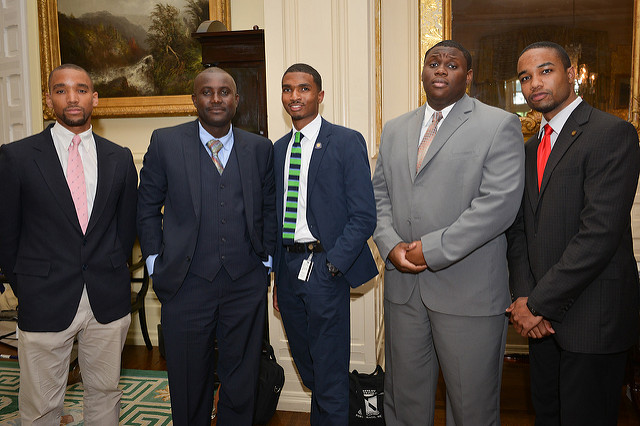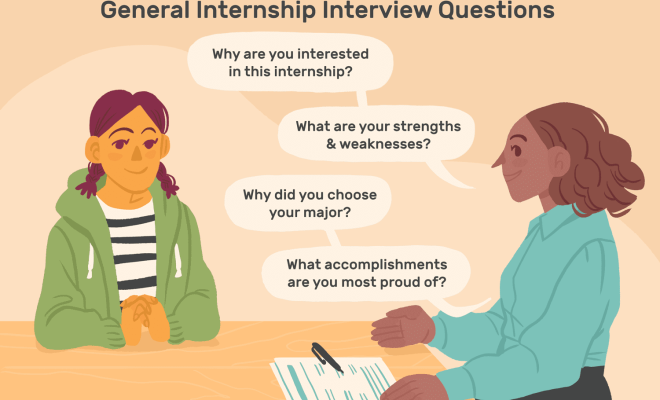Are College Payments Stealing America’s Livelihood?: The Forces Behind Skyrocketing College Costs

If it seems like college is more expensive than ever before—and with less return on investment than in previous generations—it’s not your imagination. Why is this happening? Find out in this chapter.
Consider this: today; a degree is a requirement for more entry-level jobs than before. This will be even truer in the future. In fact, according to the Committee for Economic Development, in 1965, just 11% of jobs required post-secondary training, but by 2020, 65% of U.S. jobs will require post-secondary training.
The problem is that those degrees are much more expensive than the degrees of ten or twenty years ago. This is even after taking inflation into account.
What’s happening? Are colleges inherently worth that much more than they have been in the past? While it’s true that the demand is higher, the truth is that there are many factors driving the costs of higher education in America. Here, you’ll see some of what’s going on behind the scenes. You will find out exactly what’s leading more students (and their parents) to take on hefty loans for a chance at success in life.
Is the federal government behind the rising cost of higher education?
According to Senator Elizabeth Warren, the answer is yes.
In 2015, she wrote a blistering letter to the Department of Education’s acting Education Secretary John King regarding how the department handles student loan fraud.
In the letter, Warren accuses the department of not having a proper handle on student loan contractors and specifically cites its relationship with Navient, formerly known as Sallie Mae.
In 2014, the Department of Education and Navient reached a settlement of $100 million due to Navient’s role in violating a federal law that pinches interest rates at 6% for service members.
Warren’s issue isn’t necessarily with the settlement; it’s that the department has failed to oversee its relationship with Navient.
As the company holds millions of student loans, the department’s relationship with Navient hasn’t been impacted even as the company was found to have broken the law.
Moving forward, Warren not only wants the department to reassess its position with Navient but wants to know why the company hasn’t been penalized further.
To put some fears to rest, the department launched an internal investigation into Navient’s loan practices and found that a small percentage of those who borrowed were not receiving the federally mandated rate.
Warren notes the Department of Education’s Inspector General revealed that the department’s internal investigation into Navient was flawed and erroneous.
Towards the end of the letter, Warren writes that the findings of an independent review of the department’s handling of student aid are that companies that are responsible for supervising student loan debt receive protection from the Department of Education when they break the law.
As students and former students grapple with how to pay back student loans and are harassed by the likes of companies like Navient, the information presented in Warren’s letter is damaging and sad.
If the Department of Education is indeed offering protection to companies that break the law and are failing to properly shelter students from these organizations, it proves why so many students have little faith in college affordability and the government’s role in helping them.
That’s not the only time Senator Warren has called out the Department of Education.
The Senator isn’t one to shy away from controversy, which is why it comes as no surprise that she’s railing against the United States Department of Education.
According to the New York Times, Warren held a press conference to talk about student loan debt and a system of “external checks” that would govern complaints against the department.
“We don’t trust a bank to handle its complaints, and we shouldn’t trust the federal student loan program to do it either,” Warren said according to the New York Times.
Warren criticized colleges and universities, the U.S. Department of Education, state legislatures, and more.
She said that outstanding student loan debt needs to be refinanced and that “college affordability and student debt” are issues that need to be included in the re-authorization of the Higher Education Act.
While Warren isn’t running for president, her words will likely resonate with voters on the left as she attempts to galvanize liberal and progressive voters ahead of the 2016 presidential election.
Her colleague in the Senate, Bernie Sanders, has an ambitious plan to regarding higher education, and that’s to make it free by taxing Wall Street.
Both lawmakers are talking about issues that many students and young Americans care about: making college more affordable or just making it free all together.
We’re likely pretty far off from giving away access to colleges and universities, but in the interim, the discussion surrounding the price of higher education and the debt that students carry is certainly worth having. We just need to ensure that the talk eventually turns into action that will help students.
Or could it be the state governments’ faults?
Former Education Secretary Arne Duncan in 2015 said that higher education in the United States needs more accountability and for schools to “deliver what they promise to students.”
According to the Washington Post, Duncan gave a speech at the University of Maryland Baltimore County where he made the calls for accountability and states to discontinue the “pattern of disinvestment.”
““[T]he widespread cutbacks that states have made in their higher education budgets desperately need to be reversed,” he said. “In all, 47 states cut per-student spending between 2009 and 2014, by an average of about 13 percent. Over the past 25 years, state per-student spending is down 25 percent, after adjusting for inflation! For each dollar states put in higher education today, the federal government invests more than two.”
Duncan, in essence, was saying that the federal government cannot continue to invest lost state dollars back into higher education because many states weren’t focusing on higher education as they should.
He also mentioned in the speech that changing the system, or the culture, will be tough to accomplish.
Duncan is correct in noting that the system will not change overnight.
What’s stopping change from happening? Let’s look more closely at what states prioritize today.
According to a report by the American Academy of Arts and Sciences, 11 states spend more money on correctional facilities than public research universities.
The report outlines how many states have cut spending on higher education while increasing budgets for jails and prisons.
Higher education spending didn’t start to fall once the recession started. Funding for higher education in many states begins toppling back in 1990 from 14.6 percent to just 9.4 percent in 2014.
Michigan, Oregon, Arizona, Vermont, Pennsylvania, New Hampshire, Delaware, Rhode Island, Massachusetts, Colorado, and Connecticut all failed to make the cut. Each state has a higher budget for jails and prisons than public research universities.
Adjusted for inflation, spending on elementary and secondary education increased by nearly 70 percent while corrections saw an increase of over 140 percent between 1986 and 2013.
In Michigan, nearly 25 percent of the state’s spending from general fund expenditures went towards corrections compared to just 15 percent on higher education.
The percentages are much closer in other states like Rhode Island and Delaware, but corrections spending still gets a larger percentage.
Oregon seems to be the worst defender. Less than 5 percent of general fund expenditures are dedicated to higher education, but the state spends nearly 15 percent of that money on correctional facilities.
The bottom line is that too many states invest in faux rehabilitation methods and not enough on student engagement. Imagine if we invested that money upfront in our troubled youth instead of putting it towards locking them up. It takes a fundamental understanding that it NEEDS to happen, though – something that is lacking in the U.S. education system.
Another cause for concern? Rising health care costs.
According to a study, there is a correlation between the rising cost of Medicaid and declined to spend on higher education. Created by Moody’s Analytics for The National Commission on Financing 21st Century Higher Education, the study suggests that state budgets will constrict spending on higher education because of the high cost of Medicaid.
Because money from the Affordable Care Act will start to slow by 2020, many states will have to allocate more funds for Medicaid, which in turn will cause a decrease in discretionary spending.
So, many states that are struggling with budget deficits or have deeply cut funding for higher education will likely face more financial issues.
The study portends that Medicaid will outrun state revenues. If that potential trend holds, then higher education truly is in trouble.
When colleges are the problem
For-profit schools have earned a reputation, and it’s not a favorable one, either.
For example, California Attorney General Kamala Harris filed a lawsuit against the company that operates the now-defunct for-profit Corinthian Colleges arguing that the organization left its students out to dry by saddling them with massive amounts of debt that many could not afford to pay back.
As a result, Corinthian Colleges Incorporated received a judgment against it of $1.17 billion to be paid to the State of California for illegal practices.
The school rewarded students with worthless degrees that many companies refused to recognize, leaving students without the ability to repay their exorbitant student loans.
So a California judge ruled for the state of California and ordered Corinthian Colleges Inc. to pay over $800 million in restitution to former students with the remaining amount going towards penalties.
This seems to be great news for students as they’ll have the ability to potentially receive some financial relief from student loans received while attending a Corinthian College.
But there may be a problem as Corinthian filed for bankruptcy last year, and by way of information from the company’s former attorney, Corinthian may not have to pay since it is no longer in operation.
No matter for the state and Harris, though, as her office has set up a website for students to visit to receive help and to gain information about the judgment.
Schools run by Corinthian Colleges Inc. operated under the umbrella of career colleges where students who wanted a college degree but didn’t have the time to absorb a traditional college schedule, could attend and receive a degree to help them receive better employment opportunities.
The company went after people of poor financial means and profited off of those individuals’ ability to receive student loans from the government and private lenders.
Corinthian likely received up to 90 percent of its funding from federal loan programs, so many of the schools were being fueled economically by the government and poor students.
Hopefully, students in California will be able to collect what was lost.
Corinthian Colleges is not the only school guilty for its mismanagement of funds.
In fact, more than 500 schools in the U.S. are among colleges being investigated. According to Insidehighered.com, the United States Department of Education is “closely monitoring a greater number of colleges and universities over concerns about their management of federal funds…”
Many of the schools on the list of potential colleges being investigated are “for-profit beauty and cosmetology schools.” These types of institutions have come under increased fire for their collection of federal funds to allow students to enroll. But many students at some for-profit schools have complained that their degrees are worthless and that they are left saddled with piles of student loan debt and no gainful employment to show for it. That, to me, is certainly cause for colleges to be investigated by the U.S. Department of Education.
Other for-profit schools listed include ITT Technical Institute, The Art Institutes, and South University.
For-profit schools aren’t languishing alone on this list, though. Cheyney University, a Historically Black College and University (HBCU), was placed on the department’s “most stringent form of monitoring over concerns with the institution’s ‘administrative capability.’”
Cheyney has faced financial trouble as of late due to a rise in deficits, a decrease in enrollment and a campus that is falling apart. That institutional erosion is due in part to moves made by Cheyney’s administration.
Students at any institution on the list of colleges being investigated may want to monitor the progress of the list as schools are removed or added periodically. This shows that the Department of Education is serious about ensuring that the education of students at these types of schools isn’t wasted on loans and empty job guarantees. It’s important that predatory institutions that do not implement the proper job placement and degree-use policies are called out, and if necessary, shut down.
Finally, it’s worth noting that schools need to be accountable not just for managing their funds, but for ensuring that their students finish school.
There are a lot of metrics in place to measure the effectiveness of P-12 schooling in the U.S. Stats shine a particularly bright light on public schools, particularly when they are failing students. Dropout rates are just one of the factors taken into account when these numbers are calculated and tend to weigh heavily on the schools and districts who have low percentages.
However, the same does not seem to be true once the high school years pass. Compared to P-12 institutions, colleges and universities seemingly get a pass when it comes to dropout rates – perhaps because in the past, higher education was considered more of a privilege and less of a right. A college dropout was simply walking away from the assumed higher quality of life that came with the degree but still had opportunity to excel without it
That’s not the case anymore. As of 2013, 17.5 million students were enrolled in U.S. colleges and universities. More than ever, colleges and universities have a responsibility to not simply admit students, but ensure they are guided properly to graduation. In other words, institutions of higher education should not be able to just take their student’s money and say “good luck.” They should provide the tools necessary for students to successfully achieve a college education and anticipate the issues that could prevent that.
Authors Ben Miller and Phuong Ly discussed the issue of the U.S. colleges with the worst graduation rates in their book College Dropout Factories. Within the pages, the authors encouraged educators at all levels to acknowledge that colleges and universities should share responsibility for successful or failing graduation rates and that the institutions with the worst rates should be shut down. Perhaps the most terrifying suggestion in the book (for colleges and universities) was that public institutions with low graduation rates would be subjected to reduced state funding.
The book was written based on findings from Washington Monthly that ranked the U.S. schools with the lowest six-year graduation rates among colleges and universities, including public ones like the University of the District of Columbia (8%), Haskell Indian Nations University (9%), Oglala Lakota College (11%), Texas Southern University (13%) and Chicago State University (13%). These stats were published in 2010, so they are not the most current available but a quick scan of the University of the District Columbia’s official page shows graduation rate numbers through the end of the 2003 – 2004 school year. The past nine years are nowhere to be found. The school boasts 51.2 percent underrepresented minorities in the study body, including 47 percent that are Black – but what good are those numbers if these students are not benefitting from their time in college because they receive no degree?
In the case of Chicago State University, the latest statistics show some improvement from the 2010 ones. The six-year graduation rate is up to 21 percent – but the transfer-out rate is nearly 30 percent. The school has 92 percent underrepresented minorities that attend – 86 percent who are black and 70 percent who are female – but again, what good does any of that do if these traditionally disadvantaged students are not graduating?
In all cases of college dropout factories, the P-12 institutions chalk up a victory on their end. They graduated the students and also saw them accepted into a college. What happens after that is between the students and their higher education choices.
This, to me, is a problem. The accountability for student success extends beyond the years that they are in P-12 classrooms. Graduation from high school, and acceptance into college, should never be the final goal of P-12 educators. That is not a victory. That is only halftime.
As far as the colleges and universities are concerned, higher accountability should be demanded from educators, students, parents and any Americans that want the best economy and highest-educated population. Public institutions, in particular, should be subject to restructuring or take over if dropout rates are too high. The lack of delivery on the college degree dream at many of these schools is appalling, frankly, and has gone on long enough.
They’re all making it worse
Evidently, it’s not just one person or one group causing all the issues. This is a multifaceted problem…and it is one that will, unfortunately, price a lot of lower-income people out of their number one ticket for social mobility in America. It will be a shame if we cannot figure out how to fix a broken system.



